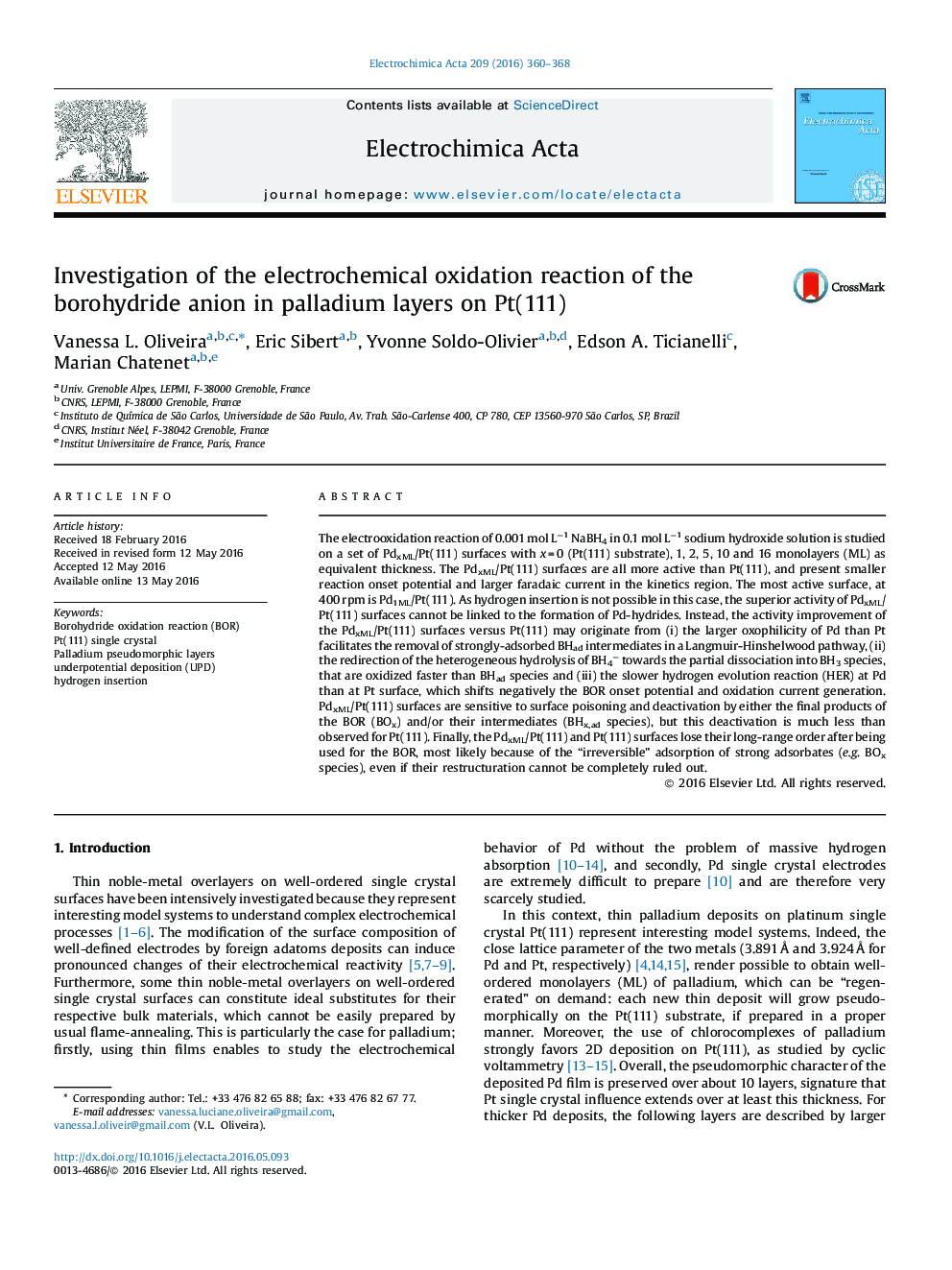| Article ID | Journal | Published Year | Pages | File Type |
|---|---|---|---|---|
| 6606886 | Electrochimica Acta | 2016 | 9 Pages |
Abstract
The electrooxidation reaction of 0.001 mol Lâ1 NaBH4 in 0.1 mol Lâ1 sodium hydroxide solution is studied on a set of PdxML/Pt(111) surfaces with x = 0 (Pt(111) substrate), 1, 2, 5, 10 and 16 monolayers (ML) as equivalent thickness. The PdxML/Pt(111) surfaces are all more active than Pt(111), and present smaller reaction onset potential and larger faradaic current in the kinetics region. The most active surface, at 400 rpm is Pd1ML/Pt(111). As hydrogen insertion is not possible in this case, the superior activity of PdxML/Pt(111) surfaces cannot be linked to the formation of Pd-hydrides. Instead, the activity improvement of the PdxML/Pt(111) surfaces versus Pt(111) may originate from (i) the larger oxophilicity of Pd than Pt facilitates the removal of strongly-adsorbed BHad intermediates in a Langmuir-Hinshelwood pathway, (ii) the redirection of the heterogeneous hydrolysis of BH4â towards the partial dissociation into BH3 species, that are oxidized faster than BHad species and (iii) the slower hydrogen evolution reaction (HER) at Pd than at Pt surface, which shifts negatively the BOR onset potential and oxidation current generation. PdxML/Pt(111) surfaces are sensitive to surface poisoning and deactivation by either the final products of the BOR (BOx) and/or their intermediates (BHx,ad species), but this deactivation is much less than observed for Pt(111). Finally, the PdxML/Pt(111) and Pt(111) surfaces lose their long-range order after being used for the BOR, most likely because of the “irreversible” adsorption of strong adsorbates (e.g. BOx species), even if their restructuration cannot be completely ruled out.
Related Topics
Physical Sciences and Engineering
Chemical Engineering
Chemical Engineering (General)
Authors
Vanessa L. Oliveira, Eric Sibert, Yvonne Soldo-Olivier, Edson A. Ticianelli, Marian Chatenet,
